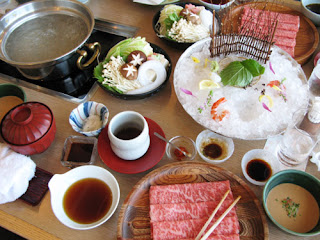Otanjoubi omedetougozaimasu!
Tanjou-who? Omede-what now? Try pronouncing this when wishing someone a happy birthday in Japanese...
How do the Japanese celebrate their birthdays? Do they eat sushi instead of cake, do they wear kimono’s, and do they actually go singing karaoke? Takako Ushiba, local producer of the Belgian logistics team, satisfies our curiosity and happily tells us about the Japanese birthday or tanjoubi.
Happy birthday to you
Japan no longer has the tradition of Japanese birthday songs: everyone simply sings 'happy birthday'. However, the Japanese birthday culture has an advantage over ours: the birthday boy or girl never buys drinks for everyone! As for gifts, the unwritten Japanese politeness rule reads that only gifts you get from close friends, you can open in their presence. A gift from someone you don’t know that well should be opened at home and followed by a thank you note.
Cake, candles and steakhouses
Forget about sushi: whether young or old, Japanese like cake just as much as we do. Even candles form a part of birthdays every year – even at the age of 60!
Adults usually celebrate their birthday within their family, eating cake and drinking tea in the afternoon. Grandparents in particular are the symbol of a Japanese family. On their birthdays, the entire family comes together to celebrate. When kids have their birthdays, it’s usually the mother who cooks. For example, Takako’s best friend prepares roastbeef five times a year: once for each of her children!
On her own birthday, Takako likes to eat out with the best friends at an American steakhouse or Brazilian churrasco (barbecue joint). Sushibars are only enjoyable with a small group, as you usually sit at the counter. Some Japanese restaurants offer groups a separate room where they can celebrate without having to rent the entire place. And since cake is not exactly a Japanese specialty, you can even ask some restaurants in advance if you can bring your own cake and candles!
Party time
At the age of 12, Japanese children start celebrating their birthdays outside of their own homes. For example, they go see a movie together. Girls usually have to be home a little earlier than boys.
At the age of 12, Japanese children start celebrating their birthdays outside of their own homes. For example, they go see a movie together. Girls usually have to be home a little earlier than boys.
Japanese people don’t wear special birthday clothes. Only when girls or boys turn twenty, they still put on a traditional Japanese kimono. Indeed, this is the age when they can start smoking and drinking and thus officially become adults.
Last, Takako confirms our suspicions... All Japanese high-school students love celebrating in karaoke bars! As there is no public transport between 12 PM and 5 AM, groups of ten to twenty students often rent a karaoke room for the whole night. This way, they can keep on singing until sunrise…
LOOKING FOR A GOOD BIRTHDAY PRESENT!!!!
EXCELLENT CONDITION
with
VERY AFFORDABLE PRICE
want assistance contact the Birthday day Girl!!
KEI OOMORI
kei@mercy.co.jp / +81-50-5532-8180
Only here in
PROSPER COMPANY LTD.,























